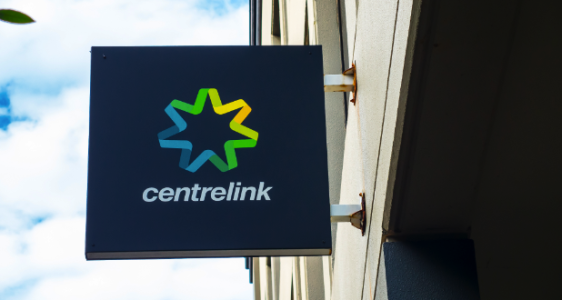Centrelink payment delays worsen. Are you affected?
- Replies 19
For millions of Australians, Centrelink payments are a crucial lifeline. But right now, most claims are facing blowouts in processing times, leaving many stranded.
New data reveals that 27 out of 32 payment types overseen by Services Australia are experiencing sharp increases in wait times. This includes common payments like JobSeeker, Age Pension, Parenting payment, and more.
In recent reports, it was found that call wait times at Centrelink have increased. In July and August, only 23 per cent of calls were answered, compared to 35 per cent throughout the 2022-23 financial year.
Additionally, newly released documents in Senate estimates showed that most payment processing times now fall short of their set 'timeliness standards', which are goals established by Services Australia and its partner agencies.

So what's causing the hold-up? Centrelink blamed a return to regular staffing levels after extra pandemic support ended. But with cost of living pressures at an all-time high, demand is also skyrocketing.
The data shows some of the most impacted payments:
Age Pension: The target processing time is 49 days, but in August, the average wait was 61 days. This is an increase from 33 days in 2022-23 and 35 days in 2021-22.
Jobseeker payment: It's supposed to be processed within 16 days, but in August, it took an average of 29 days. This is up from just nine days in the previous financial year (2021-22) and 11 days in 2022-23.
Parenting payment: It should be processed within 21 days, but in August, it took an extended 45 days, although it averaged 16 days in both 2021-22 and 2022-23.
Additional Childcare Subsidy Transition to Work payment: This payment had the longest processing time, taking 98 days in August, a significant increase from the 39 days on average in 2022-23 and 45 days the year before.
Hank Jongen, the General Manager of Services Australia, has acknowledged that the department processes millions of claims each year and is working diligently to expedite the process.
In the 2022-23 fiscal year, Centrelink handled 3.6 million claims, with an average waiting time of 27 days in September.
‘We apologise to anyone who is waiting longer than they should be,’ he said. He’s also encouraging customers facing hardship to inform them so they can prioritise those in the most urgent need.
‘We are doing our best to meet demands within this resourcing.’
Catherine Caine, a spokesperson for the Australian Unemployed Workers’ Union, described the lengthy waiting times as a nightmarish experience for people relying on welfare.
‘Imagine you’re going through some life-altering stress, and you haven’t received any updates about the payment you need to survive,’ she said.
‘You try to call and find out, but the phone call never connects. And this goes on for months and months.’
She then said: ‘This system is crumbling, and those on income support are being forced to bear the brunt.’
This comes after the issue was brought up during recent Senate hearings, where Centrelink bosses failed to answer Senators' tough questions regarding the agency's declining service standards.
‘When I questioned Services Australia officials in estimates this week about why the customer call wait times were so high, they said one reason was that they had redeployed staff away from calls to process claims more quickly,’ recounted Senator Janet Rice.
‘But these figures show they’re not improving claim times either. In fact, like everywhere else, it’s getting worse.’
‘It’s clear that Services Australia is woefully under-resourced,’ she argued.

If you're facing payment delays, rest assured that many others are in the same boat. We hope things will get better soon for everyone!
We'd like to hear from you, members. Have you ever endured long wait times to reach a Centrelink representative? How did it turn out for you? Please share your stories and experiences in the comments section below!
New data reveals that 27 out of 32 payment types overseen by Services Australia are experiencing sharp increases in wait times. This includes common payments like JobSeeker, Age Pension, Parenting payment, and more.
In recent reports, it was found that call wait times at Centrelink have increased. In July and August, only 23 per cent of calls were answered, compared to 35 per cent throughout the 2022-23 financial year.
Additionally, newly released documents in Senate estimates showed that most payment processing times now fall short of their set 'timeliness standards', which are goals established by Services Australia and its partner agencies.

New documents tabled in Senate estimates reveal the majority of Centrelink payment processing times have fallen below internal targets. Credit: Shutterstock.
So what's causing the hold-up? Centrelink blamed a return to regular staffing levels after extra pandemic support ended. But with cost of living pressures at an all-time high, demand is also skyrocketing.
The data shows some of the most impacted payments:
Age Pension: The target processing time is 49 days, but in August, the average wait was 61 days. This is an increase from 33 days in 2022-23 and 35 days in 2021-22.
Jobseeker payment: It's supposed to be processed within 16 days, but in August, it took an average of 29 days. This is up from just nine days in the previous financial year (2021-22) and 11 days in 2022-23.
Parenting payment: It should be processed within 21 days, but in August, it took an extended 45 days, although it averaged 16 days in both 2021-22 and 2022-23.
Additional Childcare Subsidy Transition to Work payment: This payment had the longest processing time, taking 98 days in August, a significant increase from the 39 days on average in 2022-23 and 45 days the year before.
Hank Jongen, the General Manager of Services Australia, has acknowledged that the department processes millions of claims each year and is working diligently to expedite the process.
In the 2022-23 fiscal year, Centrelink handled 3.6 million claims, with an average waiting time of 27 days in September.
‘We apologise to anyone who is waiting longer than they should be,’ he said. He’s also encouraging customers facing hardship to inform them so they can prioritise those in the most urgent need.
‘We are doing our best to meet demands within this resourcing.’
Catherine Caine, a spokesperson for the Australian Unemployed Workers’ Union, described the lengthy waiting times as a nightmarish experience for people relying on welfare.
‘Imagine you’re going through some life-altering stress, and you haven’t received any updates about the payment you need to survive,’ she said.
‘You try to call and find out, but the phone call never connects. And this goes on for months and months.’
She then said: ‘This system is crumbling, and those on income support are being forced to bear the brunt.’
This comes after the issue was brought up during recent Senate hearings, where Centrelink bosses failed to answer Senators' tough questions regarding the agency's declining service standards.
‘When I questioned Services Australia officials in estimates this week about why the customer call wait times were so high, they said one reason was that they had redeployed staff away from calls to process claims more quickly,’ recounted Senator Janet Rice.
‘But these figures show they’re not improving claim times either. In fact, like everywhere else, it’s getting worse.’
‘It’s clear that Services Australia is woefully under-resourced,’ she argued.
Key Takeaways
- Centrelink is facing significant delays in processing claims, with only 5 out of 32 payment types not experiencing increased processing times.
- Documents revealed in Senate estimates showed that most payment processing times had fallen below their new 'timeliness standard'.
- Centrelink attributes the delays in processing payments to the return of regular staffing levels after the extra pandemic support ended.
- Catherine Caine, a spokesperson for the Australian Unemployed Workers’ Union, described the lengthy waiting times as a nightmarish experience for people relying on welfare.
If you're facing payment delays, rest assured that many others are in the same boat. We hope things will get better soon for everyone!
We'd like to hear from you, members. Have you ever endured long wait times to reach a Centrelink representative? How did it turn out for you? Please share your stories and experiences in the comments section below!







